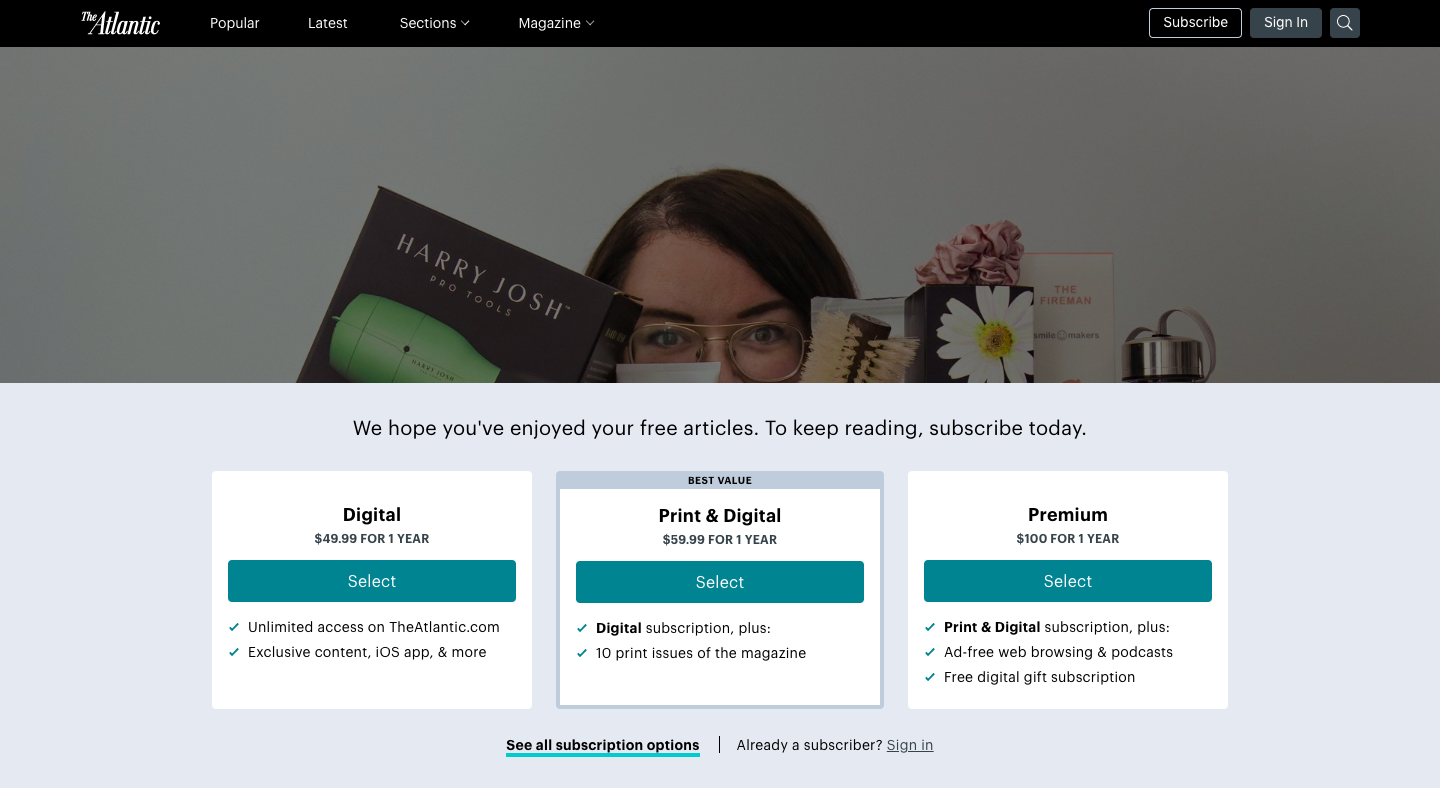
More than a decade after it dropped its paywall, The Atlantic has joined the growing group of magazine publishers with a meter: Like New York and Wired in 2018, the 162-year-old publisher on Thursday announced that it’s enacting a subscription plan across its site. Users will be able to access five articles each month for free before being required to pay annual fees of $49.99 for digital access only, $59.99 for print and digital, or $100 for a “premium” package that includes print and digital, ad-free web browsing, a free digital subscription to give to someone else, and other perks. The Masthead, the membership (not to be confused with subscription) program that The Atlantic launched two years ago, will be folded in with the premium package.
“Our audience is up 20 percent year over year, and active readers — readers who visit us four or more times per month — are up 25 percent,” said Michael Finnegan, the president of Atlantic Media (who will be taking on additional duties when Atlantic president Bob Cohn leaves on September 7). That audience growth — as well as the 80-plus new positions The Atlantic has added in the past 18 months, many of which are “specifically focused on having a better interaction with our readers” — convinced leadership that now was the right time to launch the paywall, Finnegan said. (The publication had originally said it would test a paywall with some readers in January 2018; The Wall Street Journal reported last month that owner Laurene Powell Jobs requested the delay to allow more time for hiring and platform development.)All articles on TheAtlantic.com will count toward the five-story monthly limit; the homepage and section fronts won’t be included, nor will videos, podcasts, or live event pages, but stories from links on social media will count toward the monthly five. CityLab and Atlantic Media’s other brands like National Journal and Defense One remain free.
As the paywall rolls out, the question now is how many readers will be ready to pay for yet another digital news subscription. As Nieman Lab’s Joshua Benton wrote earlier this year:Only 16 percent of Americans say they are willing to pay for any online news. If someone’s first digital subscription is to the Times or the Post — how many are willing to pay for a second, or a third, or a fourth news site? Especially if that second or third site costs as much or more than their favorite national daily?
To frame it another way: There’s a segment of the population that can grudgingly be convinced to pay for a news site, out of some mix of consumer reward, civic duty, and peer pressure. But that second or third subscription requires a level of devotion that can be hard to sustain in a digital environment where the links come at you from every direction.
And so The Atlantic will continue to be open to experimentation, and to making content available on platforms beyond its own. It’s a participant in Apple News Plus and will participate in Scroll.
“We don’t want to close ourselves off to people who want to have different types of relationships with their news sources,” Finnegan said. “We’re going to continue to explore those opportunities. But we’re putting a lot of weight behind trying to build as large a direct relationship with our readers as possible…We see there are some audiences, really loyal to us, who have zero or one subscriptions, some who have many more subscriptions than that, and what we have figured out is that enough of those people have shown a willingness to pay for The Atlantic.”